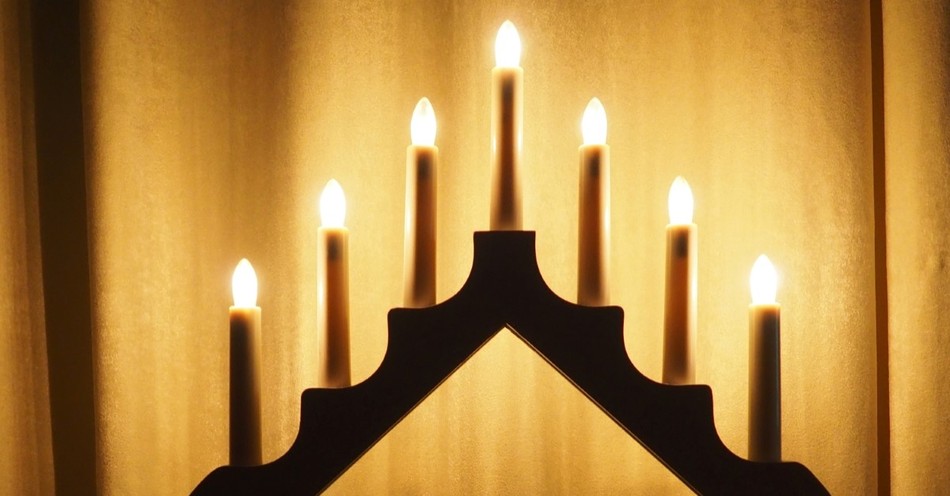The Book of Revelation seems to thrive on the number seven. Seven thunders. Seven seals. Seven trumpets. Seven bowls of God’s wrath. So it should come as no surprise that another element comes in a batch of seven: the seven golden lampstands.
Unlike the other groupings of seven in Revelation, this doesn’t seem to represent an element of God’s judgment. Something terrible happens on earth in all the other seven pairings (seals, trumpets, etc.). The terrible thing can range from the moon turning red to water sources becoming undrinkable thanks to the wormwood star.
In this article, we’ll explore the seven golden lampstands, what they represent in Revelation, and why we should know about them in the first place.
What Are the Seven Golden Lampstands?
You may know these by another name. The seven golden lampstands also go by the name of the seven lampstands. They appear in the first two chapters of Revelation when John writes letters to various churches. John wrote to these churches sometime around 90 AD, 20 years after Jerusalem fell to Rome.
Some scholars do believe that these churches represent future churches. Some even debate whether Laodicea, one of the churches mentioned, represents America.
For our intents and purposes, we’ll assume that John is writing to historical churches. While other churches in the church’s history follow the same patterns as these, John was writing to churches that existed during his lifetime.
With that said, why is John writing to these seven churches—or these seven lampstands?
We have to look to the Apostle Paul to answer this question. In his letters available today, Paul is writing to very specific churches. Among others, he wrote to churches in Corinth, Ephesus, and Rome. We can learn much from these churches—what they did well and how they struggled. Similarly, the churches John wrote to can show us great examples of faith or serve as cautionary tales.
What Does Each Lampstand Represent?
So let’s analyze each of the seven golden lampstands in Revelation. But before we proceed, we must answer the question: why lampstands?
The lamp, or candle, represents the Holy Spirit’s presence, often associated with fire. We know this because John warns some churches that the Holy Spirit can depart them if they continue their wicked behavior. Some other people surmise that the lampstands represent the church at every age, that the church supposedly has seven ages. Light can also represent the ability to spread the Gospel and bring light into the darkness.
We’ll move forward on the interpretation that it represents the seven churches.
Who Are the Seven Golden Lampstands?
Let’s explore the seven churches in revelation: their good habits and bad.
Ephesus (Revelation 2)
Paul had previously written to this church (remember his letter to the Ephesians?).
In his letter, John commends this church for its hard work and perseverance. They also have ousted several false Christians and prophets from their congregation and endured much persecution for Christ’s sake. They even hated the acts of a false group known as Nicolaitians at the time.
Still, they were not perfect. They had forsaken their first love. They had gotten so wrapped up in religious duties that they forgot why they had started in the first place.
Legalists can learn a great deal from this church. Although we love to do good, we cannot allow empty religion to consume us.
Smyrna (Revelation 2)
This church has endured afflictions and poverty. Because of this, they have become rich in God’s kingdom.
In the Gospels, Jesus often talks about treasures in heaven and how they hold far more value than whatever treasures we can have on earth. We should also note that Smyrna was a rich city known for its advances. The fact that the church stationed there didn’t blend into its culture should stand out to us.
John encourages the church not to fear its tests and trials. They will come out the other end stronger than before.
John doesn’t have anything negative to say about this church. We can learn from Smyrna’s example not to conform to the patterns of this world. Although we may not boast of earthly riches, we collect heavenly ones.
Pergamum (Revelation 2)
Imagine living right next to Satan.
At least, according to Revelation, the church of Pergamum resided right next to “Satan’s dwelling place.” We know Satan is not omnipresent, so he can only roam from one place to another. Whether or not he has an actual resting place, or this is a metaphor for an especially dangerous place where he had much influence, is up for debate.
Nevertheless, the church existed in a space very close to his dominion. And still, they stood strong in their faith. This church endured extreme persecution, especially “in the days of Antipas.” We can imagine Antipas was a figure who martyred several Christians.
Yet this church is not without issues. They have fallen back on the idolatrous practices of the Balaam—a false prophet—and the Nicolaitans. And they have given themselves to idol worship.
The church of Pergamum shows us that even when we endure hardships, we can slip back into temptations. We must watch out for the devil’s actions, especially when under trial.
Thyatira (Revelation 2)
Heard of Alexander the Great? The church of Thyatira certainly had—Alexander the Great founded the city of Thyatira. It was a city with great pride in its pagan heritage, which must have made it a difficult place to be a Christian.
Despite whatever pressures they faced, this church has persevered and continued in the faith. Still, they have allowed sexual immorality to permeate its walls. They have allowed a Jezebel spirit to operate within their church.
Although God would allow that woman to come to repentance, if she didn’t, she, and all those she led astray, would receive a punishment.
The church of Thyatira reminds us to watch for evil spirits who seek to oppress or possess members of our congregation. We should always test the spirits and operate under heavy discernment.
Sardis (Revelation 3)
A zombie church, that’s what Sardis was. They were “dead” and “dying” and pretended they were still alive.
Still, John encourages the church of Sardis that a few faithful remain. And that they will receive their eternal reward.
We can learn from the church of Sardis that appearances deceive. We have to keep an eye out for zombie churches.
Philadelphia (Revelation 3)
Trials and tribulations have battered this church. They have little strength left.
Yet they persevere.
John mentions some Jews who are a “part of the synagogue of Satan.” They persecute the church of Philadelphia. Yet God promises to deal with the persecutors in due time and commends the church for staying in the race and keeping the faith.
We can learn from Philadelphia that every evil deed will come to light. Vengeance is God’s; he will deal with those who persecute the church.
Laodicea (Revelation 3)
Many of us know about this church, but not for good reasons.
They are the black sheep of the seven churches of Revelation. John has absolutely nothing nice to say to them.
They have fallen into lukewarm Christianity. Their faith does not match their actions. God warns them that if they keep it up, he will spit them out of his mouth (i.e., they will not be saved and find their eternal reward).
None of us wants to be the church of Laodicea. But if we’re honest, how many of us clock into church on Sunday and clock out when our service ends? Do we live out our faith even in our lunch after church? Do we treat our servers with disdain and leave them no tip? Do we hold onto the same grudges we went into church service with?
The church of Laodicea serves as a cautionary tale. Don’t be a halfway Christian.
What Can We Learn from the Seven Golden Lampstands?
Above, we plucked several applications, so I won’t drag this section out. But we can learn three main things from these seven churches.
First, the church has struggled with the same things since its inception. There is truly nothing new under the sun. It seems that Satan likes to operate in the same ways over and over again.
Second, we should know our history to avoid repeating it. The most dangerous thing we can do is ignore church history. We best learn all we can so we don’t see history’s mistakes being repeated.
Finally, our heart needs to match our actions.
Several churches in Revelation either lost their first love or their heads and hearts didn’t match up. God wants an all-in faith. That way, we can burn the brightest in the earth’s darkest corners.
Photo Credit: Getty Images/Iuliia Petrovskaia
Hope Bolinger is an acquisitions editor at End Game Press, book editor for hire, and the author of almost 30 books. More than 1500 of her works have been featured in various publications. Check out her books at hopebolinger.com for clean books in most genres, great for adults and kids. Check out her editing profile at Reedsy.com to find out about hiring her for your next book project.
This article is part of our larger End Times Resource Library. Learn more about the rapture, the anti-christ, bible prophecy and the tribulation with articles that explain Biblical truths. You do not need to fear or worry about the future!
The Second Coming of Jesus
Who Are the 144,000 in Revelation?
Who Are Gog and Magog in the Bible?
What Is the Apollyon?
Is the Apocalypse Mentioned in the Bible?
Signs of the End Times and the Rapture



.jpg)
